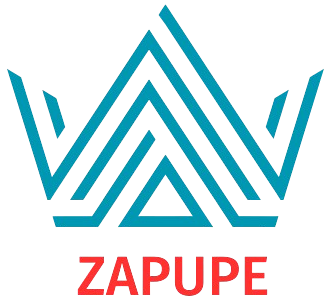Presentation
Design is a dynamic and diverse domain that goes past simple dress. It fills in as an impression of individual character, cultural qualities, and social movements. From the extravagant clothing of old civilizations to the state of the art advancements of today, design has persistently developed, reflecting the consistently changing scene of human articulation and innovation. This article digs into the interesting excursion of style, looking at its authentic development, latest things, and future headings.
The Verifiable Excursion of Design
1. Ancient Style: Images of Status and Character
Style’s starting points can be followed back to old times, where dress was both a https://esherhallfair.com/ pragmatic need and an image of status. In Antiquated Egypt, articles of clothing produced using material and decorated with intricate gems demonstrated social order and strict importance. Also, Old Greece and Rome exhibited hung pieces of clothing, for example, frocks and chitons, which were markers of citizenship and economic wellbeing, mirroring the wearer’s situation inside society.
2. Medieval and Renaissance Times: Style and Advancement
The archaic period presented more intricate style with layered pieces of clothing and perplexing weaving, connoting rank and abundance. The Renaissance time (fourteenth seventeenth hundreds of years) denoted a critical shift with sumptuous textures like velvet and silk and an emphasis on customized pieces of clothing. This period celebrated creative articulation and individual status, making way for present day style sensibilities. The accentuation on extravagance and craftsmanship turned into a sign of this time, impacting future patterns.
3. The Modern Upset: Birth of High fashion
The Modern Upset (eighteenth nineteenth hundreds of years) was a groundbreaking period for design, achieving large scale manufacturing and making upscale dress more open. This period saw the rise of high fashion, with pioneers like Charles Worth laying out style houses in Paris. The presentation of notorious styles, for example, crinolines and tailcoats set new principles for extravagance and configuration, establishing the groundwork for contemporary design rehearses.
Current Style
1. Mid-twentieth 100 years: From Fabulousness to Disobedience
The twentieth century was set apart by huge changes in design. The 1920s, known for the flapper dress, represented opportunity and advancement. The 1950s presented Christian Dior’s “New Look,” described by a secured midriff and full skirt that praised post-war womanliness. The 1960s reformed style with the mod development and the smaller than expected skirt, mirroring an energetic and exploratory soul. The 1980s embraced power dressing with intense outlines and luxurious styles, while the 1990s presented grit and moderation, testing customary design standards.
2. The Ascent of Quick Style and Computerized Impact
The late twentieth and mid 21st hundreds of years saw the ascent of quick design, with brands like Zara and H&M offering reasonable, quickly evolving patterns. This model democratized style yet additionally raised worries about ecological effect and work rehearses. The advanced age changed style through online entertainment, affecting patterns and purchaser conduct progressively. Powerhouses and advanced stages have become key to how style is promoted and experienced.
Latest things and Developments
1. Sustainability and Moral Design
The present design industry is progressively centered around maintainability and moral practices. With developing consciousness of natural issues, many brands are embracing eco-accommodating materials, diminishing waste, and advancing fair exchange. The sluggish style development underscores higher expectations when in doubt, empowering shoppers to pursue more smart buying choices. Brands are likewise taking a stab at more prominent straightforwardness and responsibility in their creation processes.
2. Technological Headways
Innovation is upsetting style in thrilling ways. Virtual style shows, expanded reality (AR) shopping encounters, and computerized reasoning (simulated intelligence) are improving plan cycles and customer cooperations. Computer based intelligence driven devices help in pattern estimating and plan, while AR gives vivid shopping encounters. Blockchain innovation is additionally being investigated for expanding straightforwardness and discernibility in style supply chains.
3. Inclusivity and Variety
Current design is embracing inclusivity and variety like never before previously. Brands are growing size ranges, highlighting different models in their missions, and tending to different orientation characters. This shift towards more prominent portrayal mirrors a more extensive comprehension of magnificence and expects to make style more open and engaging to a different crowd. The emphasis on inclusivity is cultivating a more comprehensive industry that commends distinction and variety.
The Fate of Style
As we plan ahead, a few key patterns are probably going to shape the style business:
1. Sustainability and Development: The accentuation on manageability will keep on developing, with progressions in biodegradable materials and roundabout style turning out to be more pervasive. Brands will zero in on diminishing their natural effect and advancing moral practices.
2. Technological Combination: Further advancements in simulated intelligence, AR, and blockchain will improve plan, creation, and customer commitment. Virtual and increased reality will offer new ways for shoppers to connect with design, while blockchain innovation might further develop straightforwardness and detectability.
3. Broader Inclusivity: The push for inclusivity will persevere, with design turning out to be more different as far as body types, nationalities, and orientation characters. This development will add to a more comprehensive industry that qualities and praises all types of magnificence.
End
Style is a dynamic and steadily developing field that reflects the social, social, and innovative progressions of now is the right time. From its old beginnings to contemporary patterns and future prospects, style stays a strong vehicle for self-articulation and innovativeness. As the business embraces maintainability, innovation, and inclusivity, it will proceed to move and change, mirroring the powerful idea of human personality and society.
Key Action items
• Style has developed from old images of status to a cutting edge industry driven by patterns, innovation, and manageability.
• Verifiable achievements, for example, the Renaissance and the Modern Upheaval lastingly affect design.
• Contemporary patterns center around manageability, mechanical progressions, and inclusivity, molding a more dependable and different industry.
Design keeps on being a powerful part of human articulation, adjusting to reflect and shape our general surroundings.
